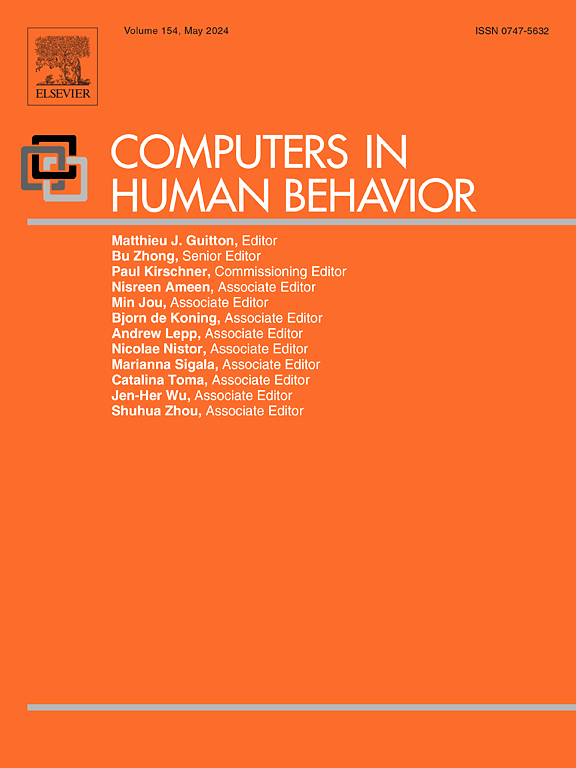Suicidal ideation recognition based on sentence completion test via coding- and topic-enhanced model
IF 9
1区 心理学
Q1 PSYCHOLOGY, EXPERIMENTAL
引用次数: 0
Abstract
Suicidal ideation refers to the thoughts related to suicide, including but not limited to specific plans for death and desires for suicide. Its recognition is of great significance in preventing individuals from suicide. In the context of large-scale screening on suicide ideation, self-report scale is the most used approach, but the subjects are easy to conceal real information. Though some automated methods based on social media platforms are put forward, they are difficult to cover all the populations that need to be tested. To this challenge, in this paper, a new perspective on suicidal ideation recognition via sentence completion test (SCT) is provided. SCT contains some sentence fragments and requires subjects to complete them, having implicitness and being suitable for large-scale screening, but its use depends on automated scoring method. Therefore, based on a self-developed SCT, a dataset is collected, containing 1,399 individuals’ responses on both the SCT and one classical self-report scale about suicidal ideation. To support the prediction with reasonable evidences for such a psychometric task, considering that individual suicidal ideation may be reflected by the different response patterns of each item or the general topic contained in all items, a coding- and topic-enhanced model for suicidal ideation recognition is proposed. The strategies of contrastive learning and focal loss are leveraged to establish different representations of different response patterns in the SCT and solve the class-imbalanced problem. To verify the effectiveness, extensive experiments are conducted, demonstrating that the proposed method achieves a feasible and practical performance.
通过编码和主题增强模型识别基于完句测试的自杀意念
自杀意念是指与自杀有关的想法,包括但不限于具体的死亡计划和自杀愿望。认识到这一点对于预防个人自杀具有重要意义。在对自杀意念进行大规模筛查时,自我报告量表是最常用的方法,但受试者容易隐瞒真实信息。虽然有一些基于社交媒体平台的自动化方法被提出,但它们很难覆盖所有需要测试的人群。针对这一难题,本文通过句子完成测试(SCT)为自杀意念识别提供了一个新视角。SCT包含一些句子片段,需要受试者完成,具有隐含性,适合大规模筛查,但其使用依赖于自动评分方法。因此,基于自主开发的 SCT,我们收集了一个数据集,其中包含 1,399 人对 SCT 和一个经典的自杀意念自我报告量表的回答。考虑到个体的自杀意念可能会通过每个项目的不同回答模式或所有项目所包含的一般主题反映出来,为了对这样一项心理测量任务的预测提供合理的证据支持,我们提出了一个编码和主题增强的自杀意念识别模型。利用对比学习和焦点丢失的策略,在 SCT 中建立了不同反应模式的不同表征,解决了类不平衡问题。为了验证其有效性,我们进行了大量的实验,证明所提出的方法具有切实可行的性能。
本文章由计算机程序翻译,如有差异,请以英文原文为准。
求助全文
约1分钟内获得全文
求助全文
来源期刊

Computers in Human Behavior
Multiple-
CiteScore
19.10
自引率
4.00%
发文量
381
审稿时长
40 days
期刊介绍:
Computers in Human Behavior is a scholarly journal that explores the psychological aspects of computer use. It covers original theoretical works, research reports, literature reviews, and software and book reviews. The journal examines both the use of computers in psychology, psychiatry, and related fields, and the psychological impact of computer use on individuals, groups, and society. Articles discuss topics such as professional practice, training, research, human development, learning, cognition, personality, and social interactions. It focuses on human interactions with computers, considering the computer as a medium through which human behaviors are shaped and expressed. Professionals interested in the psychological aspects of computer use will find this journal valuable, even with limited knowledge of computers.
 求助内容:
求助内容: 应助结果提醒方式:
应助结果提醒方式:


